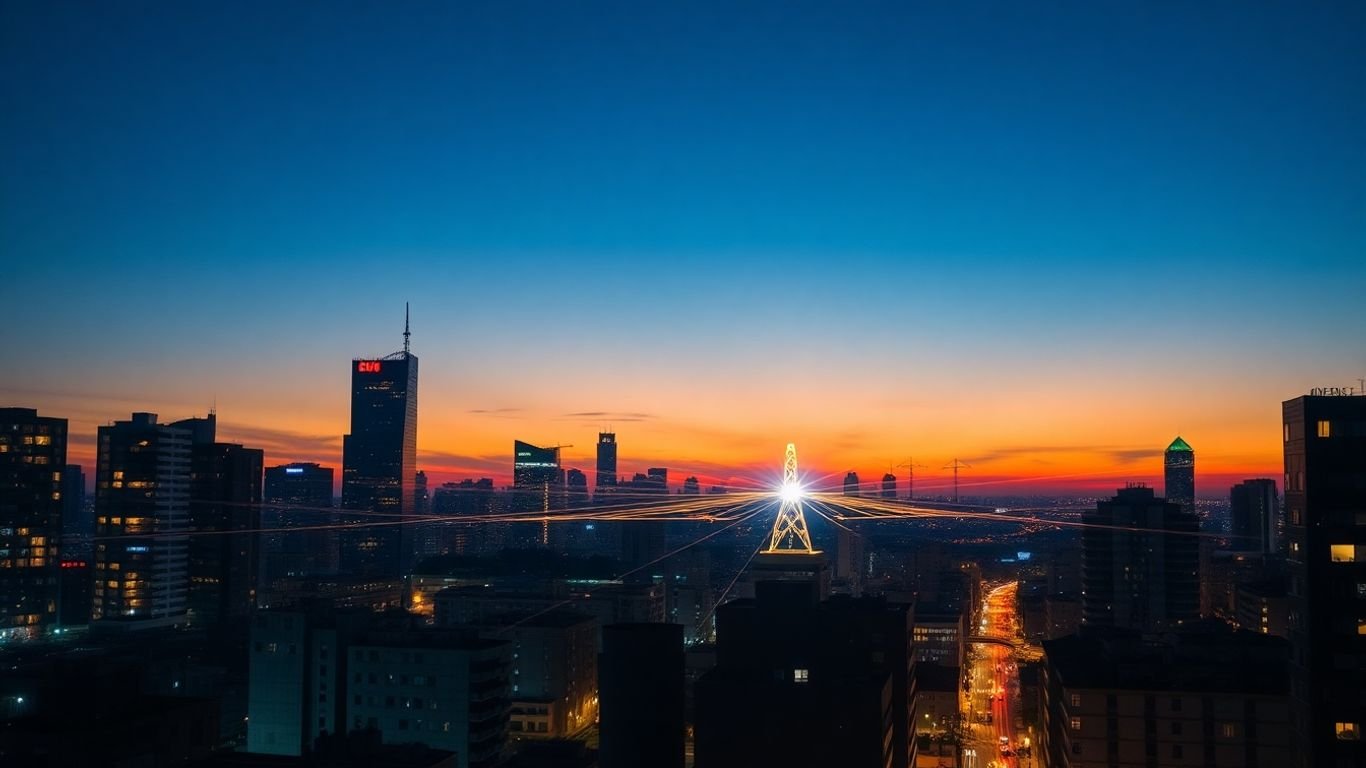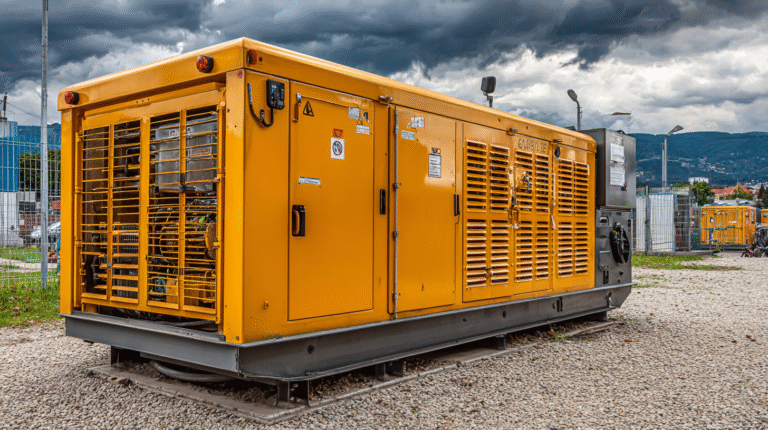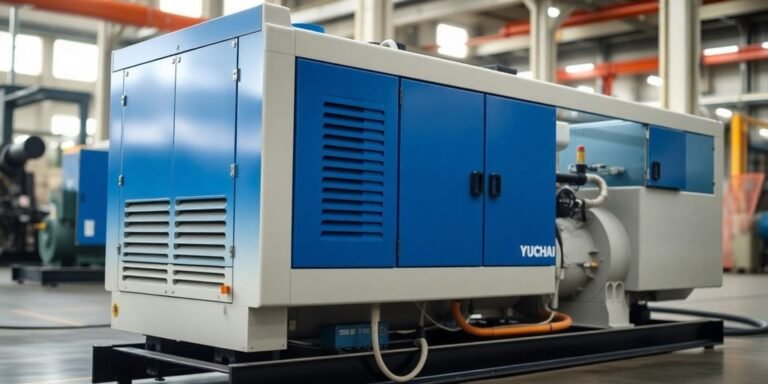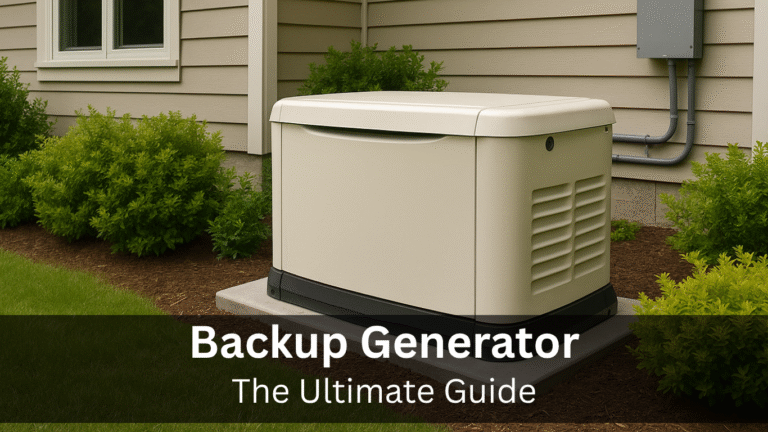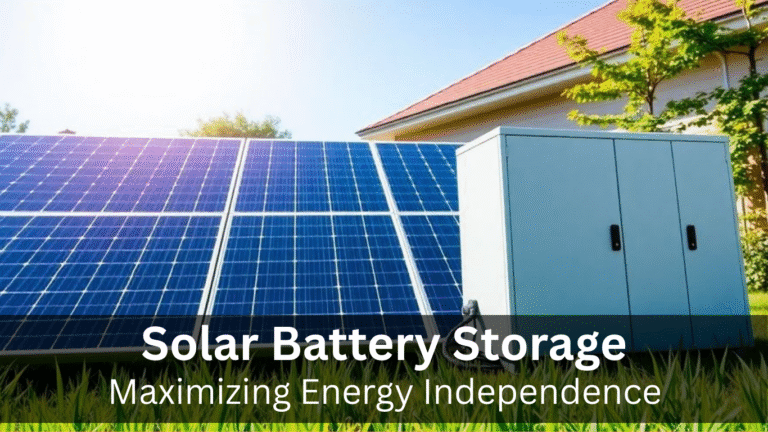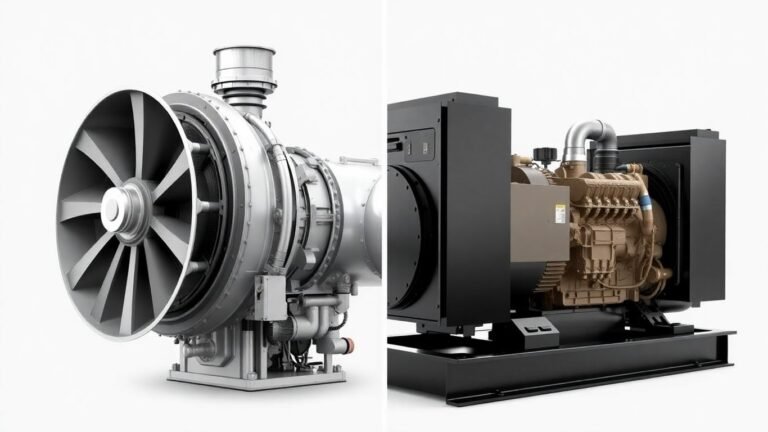The Rising Role of Microgrids in Modern Urban Energy Systems
Cities are getting a power makeover, and it’s all thanks to urban microgrids technology revolutionizing how we think about local energy. Think of an urban microgrid as a mini power grid for a specific neighborhood or area within a city. Instead of relying solely on the big, central power lines that can sometimes fail, these urban microgrid systems generate and manage their own electricity locally. This shift is changing how we get power, making our cities more reliable and cleaner. It’s a big deal for how we live and work.
Key Takeaways
- An urban microgrid is a local power system that can work on its own or with the main grid, serving a specific city area.
- These systems are built with local power generators, storage, and smart controls to manage electricity efficiently.
- Urban microgrids help keep power on for important city services, even when the main grid goes down, making cities stronger against outages.
- They make it easier to use clean energy sources like solar and wind power right in the city, cutting down on fossil fuel use.
- While they cost a lot to set up and can be tricky to connect, urban microgrids offer long-term savings and more control over local energy.
Understanding The Urban Microgrid Revolution

So, what exactly is this whole urban microgrid thing we keep hearing about? It sounds fancy, but at its heart, it’s about making our city’s power smarter and more reliable. Think of it like a mini-power grid, built right within a neighborhood or a specific part of town. This local grid can actually make its own electricity and manage it all on its own. It’s a big shift from the old way of getting power from huge plants miles away.
What Defines An Urban Microgrid?
An urban microgrid is basically a small-scale power system designed for city environments. It has its own ways of generating electricity and can connect to the main power grid, or, and this is the cool part, it can disconnect and run by itself. This ability to go it alone, or ‘island’ as they call it, is super important when the main grid goes down. It means places like hospitals or emergency services can keep their lights on even when the rest of the city is dark. It’s all about having a backup plan that’s built right in.
The Core Components Of Localized Power
What makes these microgrids tick? Well, there are a few key players. You’ve got your renewable energy sources, like solar panels on rooftops or small wind turbines. Then there’s energy storage, usually big batteries, to hold onto that clean energy for when the sun isn’t shining or the wind isn’t blowing. Smart controls are also a big deal – they’re like the brain of the operation, making sure everything runs smoothly. And of course, you have the actual places that use the power, like homes and businesses.
Here’s a quick look at the main parts:
- Generation: This is where the power comes from – solar, wind, or sometimes even small generators that run on cleaner fuels.
- Storage: Batteries are the most common, storing excess energy.
- Control System: The ‘brain’ that manages everything.
- Loads: The buildings and homes that consume the electricity.
These systems are designed to be flexible, allowing them to adapt to changing energy needs and conditions within the city. They are not just about having power; they are about having smart, reliable power.
Decentralized Energy Networks Explained
So, how does a microgrid fit into the bigger picture? It’s part of something called decentralized energy networks. Instead of one giant power plant sending electricity everywhere, decentralized networks use lots of smaller power sources spread out. This is a much more modern approach. It means less energy is lost when it travels long distances, and it makes the whole system tougher to break. Think of it like having many small water sources instead of just one big reservoir – if one source has a problem, the others can still supply water. This is a key reason why groups are looking into mobile microgrids for events and emergencies, as they offer a cleaner, quieter alternative to traditional generators [2cbd]. It’s a move towards a more distributed and resilient way of powering our lives.
Powering Cities With Enhanced Resilience

Cities are complex, and keeping the lights on, especially when things go wrong, is a huge job. Think about a major storm or a widespread power failure. Our current big, central power grids can be pretty fragile. One problem can knock out power for a whole region. That’s where microgrids really start to shine. They’re like a city’s personal backup system, built to keep critical services running no matter what.
Ensuring Continuity For Critical Urban Infrastructure
When the main grid goes down, it’s the hospitals, police stations, and emergency shelters that need power the most. Microgrids are designed to isolate themselves from the main grid and keep operating. This means a hospital can keep its life support systems running, or a fire department can stay operational during a crisis. It’s about making sure the places that protect us and keep us safe don’t go dark when we need them most. This kind of localized power is a game-changer for disaster preparedness.
Mitigating Vulnerability To Grid Failures
Our old-school power grids have a lot of single points of failure. If one big transformer blows or a transmission line gets damaged, it can cause widespread blackouts. Microgrids, by their very nature, are decentralized. They have multiple smaller energy sources and can reroute power if one part has an issue. This makes the whole system much tougher and less likely to fail completely. It’s a smarter way to build an energy system that can handle disruptions. We’re seeing initiatives like the Accelerating Resilient Infrastructure Initiative working to speed up the deployment of these kinds of systems for customers [0b92].
Strengthening Energy Security In Metropolitan Areas
Energy security isn’t just about having enough power; it’s about having reliable and independent power. Microgrids help cities achieve this by diversifying their energy sources. Instead of relying solely on distant power plants that might be affected by fuel shortages or geopolitical issues, microgrids can use local renewable energy. This reduces dependence on outside factors and makes the city’s power supply more stable and predictable. It’s a step towards true energy independence for urban areas.
Here’s a quick look at how microgrids boost resilience:
- Independent Operation: Can disconnect from the main grid and run on their own.
- Local Resources: Utilize local generation like solar or wind.
- Redundancy: Multiple pathways for power distribution.
- Critical Load Support: Prioritize power to essential services.
The shift towards microgrids means cities can weather storms, both literal and figurative, with greater confidence. It’s about building a more robust and dependable energy future from the ground up, block by block.
Accelerating Renewable Energy Integration
This is where things get really interesting for urban power. Microgrids are fantastic for bringing in clean energy sources, like solar and wind, right into the city. They act as a perfect partner for renewables, smoothing out the bumps that come with energy that isn’t always available.
Pairing Renewables With Energy Storage Solutions
Renewable energy sources, by their nature, can be a bit unpredictable. The sun doesn’t always shine, and the wind doesn’t always blow. That’s where energy storage comes in. Think of it like a battery for the city’s clean energy. When there’s plenty of solar power being generated, the microgrid can store the excess. Then, when the sun goes down or clouds roll in, that stored energy can be used. This makes the whole system much more reliable.
Common storage options include:
- Lithium-ion batteries: These are popular because they hold a lot of energy for their size and last a good while.
- Flow batteries: These are great for bigger jobs and can be scaled up easily.
- Flywheels: These spin really fast and can react instantly, which is helpful for keeping the power steady.
- Thermal energy storage: This involves storing heat or cold, which can be used for heating and cooling buildings.
Driving Clean Energy Adoption In Urban Landscapes
Microgrids make it easier for cities to use more clean energy. Instead of relying on a big, distant power plant, they can put solar panels on rooftops or small wind turbines in suitable spots. Because the energy is generated and used locally, there’s less energy lost in transmission. This makes clean energy a more practical and attractive option for urban areas that might have limited space or complex infrastructure.
The shift towards localized energy generation means that cities can directly benefit from the growth of renewable technologies. This creates a positive feedback loop: as more renewables are integrated, the demand for them increases, driving further innovation and cost reductions.
Reducing Reliance On Fossil Fuels Locally
By integrating more renewables, urban microgrids directly cut down on the need for power generated from fossil fuels. This means less pollution in the city, which is a big win for public health and the environment. It also makes the city less dependent on fluctuating global fuel prices. Local clean energy means cleaner air and more stable energy costs for everyone.
Here’s a quick look at how this plays out:
- Less pollution: Reduced burning of coal, oil, and natural gas means cleaner air.
- Stable prices: Local renewables aren’t subject to international fuel market swings.
- Energy independence: Cities can generate more of their own power, reducing reliance on external sources.
Economic Advantages For Urban Communities
It’s not just about keeping the lights on when the weather gets rough, though that’s a big part of it. Microgrids are also starting to make real sense for our wallets. Think about it: when a neighborhood can generate a good chunk of its own power, especially from cheaper renewable sources, that’s money staying local instead of going to big energy companies. This shift can lead to noticeable savings for everyday people and businesses.
Reducing Electricity Costs For Consumers
One of the most direct benefits is lower electricity bills. By using local solar panels or other renewable sources, microgrids cut down on the need to buy expensive power from the main grid. Plus, when you generate power closer to where it’s used, you avoid those pesky transmission fees that get tacked onto your bill. It’s like buying produce from a local farmer’s market instead of a distant supermarket – often fresher and cheaper.
Enabling Localized Energy Trading
This is where things get really interesting. Imagine your neighbor has solar panels and generates more electricity than they need on a sunny afternoon. With a microgrid, they could actually sell that extra power directly to you or other homes on the block. This creates a mini energy market right in your community. It’s a concept known as peer-to-peer energy trading, and it’s a game-changer for how we think about energy. This kind of local energy trading can really help communities become more self-sufficient and economically resilient. You can find out more about how community energy projects work by looking into local energy initiatives.
Fostering Economic Equity Through Energy Independence
Microgrids can also help level the playing field. For too long, access to affordable and reliable power hasn’t been equal. By allowing communities to control their own energy generation, microgrids can provide a more stable and predictable energy supply, especially for areas that have historically been underserved. This energy independence means less vulnerability to price spikes and more control over local resources. It’s about making sure everyone has a fair shot at affordable energy, which in turn supports local businesses and creates jobs right where people live.
Navigating The Challenges Of Microgrid Deployment
Building these localized power systems isn’t exactly a walk in the park. There are some pretty big hurdles to clear before we see microgrids on every city block. It’s not just about plugging in some solar panels and calling it a day; there’s a whole lot more to it.
Addressing High Initial Investment Costs
Let’s be real, setting up a microgrid from scratch costs a pretty penny. You’ve got the hardware – the generators, the batteries for storing power, the smart controls – and then there’s the installation. For many neighborhoods, especially those already struggling financially, that upfront price tag can feel impossible to overcome. It’s a tough pill to swallow when the benefits are clear, but the initial outlay is just too steep. We need creative ways to fund these projects, maybe through public-private partnerships or even community-led investment schemes. Think about it like this:
| Component | Estimated Cost Range (USD) |
|---|---|
| Renewable Energy Systems | $50,000 – $500,000+ |
| Battery Storage | $30,000 – $300,000+ |
| Control Systems | $10,000 – $100,000+ |
| Installation & Labor | $20,000 – $200,000+ |
This doesn’t even include ongoing maintenance, which is another factor to consider. It’s a significant commitment, and finding ways to make it more accessible is key to widespread adoption. The goal is to make sure these systems don’t just benefit the well-off, but can actually help everyone in a community. This is where the idea of decentralized energy really starts to take shape.
Overcoming Technical Integration Complexities
Once you’ve got the money sorted, you run into the technical side of things. Designing a microgrid that works smoothly with existing power lines, handles different types of energy sources, and can switch seamlessly between being connected to the main grid and running on its own (that’s called ‘islanding’) is complicated. It requires a good deal of specialized knowledge.
You need folks who really know their stuff when it comes to electrical engineering, software, and grid management. Getting all these different pieces to talk to each other and operate reliably, especially during an outage, is a major puzzle. It’s not just about the hardware; it’s about the sophisticated software that manages it all. This complexity means we need more training programs to build up a skilled workforce ready to tackle these projects.
Navigating Regulatory And Policy Hurdles
And then there’s the red tape. The rules and regulations for power systems were mostly written for the old, big, centralized grids. They don’t always make sense for these new, smaller, more flexible microgrids. Things like how a microgrid connects to the main utility grid, or how it gets paid for any extra power it sends back, can be a real headache.
Utilities might have strict rules about interconnection, and policies around selling excess energy, like net metering, can be unclear or unfavorable. It often takes a lot of time and effort to get all the necessary permits and approvals. We really need updated policies that are designed with microgrids in mind, making it easier, not harder, for them to get built and operate effectively. It’s about creating a level playing field so these innovative systems can actually get off the ground and start providing power.
The Future Trajectory Of Urban Microgrids
So, where are urban microgrids headed? It’s pretty exciting, honestly. We’re seeing them pop up more and more, and that trend is only going to speed up. Think about it: cities are getting smarter, and they need power systems that can keep up. Microgrids are a big part of that puzzle, helping cities become more self-sufficient and cleaner.
Anticipating Increased Adoption Rates
It’s not just a hunch; the numbers are pointing towards more microgrids. As people and businesses see the benefits – like not losing power during a storm or having lower electricity bills – they’ll want them. Plus, with more focus on climate change and energy independence, local power is just a smart move. We’re likely to see a lot more of these systems being planned and built in the coming years.
Leveraging Technological Advancements
Technology is the real game-changer here. We’re talking about smarter batteries that can store more power and release it when needed, and even AI that can manage the whole system more efficiently. Imagine microgrids that can talk to each other, sharing power or information to keep everything running smoothly. Blockchain is even being explored for local energy trading, making it easier for neighbors to buy and sell clean energy. It’s all about making these systems more capable and easier to manage.
Supporting Widespread Electrification Efforts
This is a big one. As more of our lives go electric – think electric cars, electric heating – our power grids need to handle that extra load. Microgrids are perfectly positioned to help with this. They can provide dedicated, reliable power for things like EV charging stations or electric public transport, without putting too much strain on the main grid. This localized approach is key to making a fully electric future a reality in our cities.
Here’s a quick look at what’s driving this future:
- Renewable Energy Integration: More solar panels and wind turbines on buildings and in local areas, feeding directly into the microgrid.
- Advanced Energy Storage: Better, cheaper batteries that can store excess renewable energy for use when the sun isn’t shining or the wind isn’t blowing.
- Smart Grid Technology: Sophisticated software and hardware that allows microgrids to operate autonomously or connect with the larger grid as needed.
- Community Involvement: More projects where communities have a say in, or even own, their local power systems.
The shift towards urban microgrids isn’t just about keeping the lights on; it’s about building more resilient, sustainable, and equitable communities from the ground up. It’s a move towards local control and a cleaner energy future for everyone.
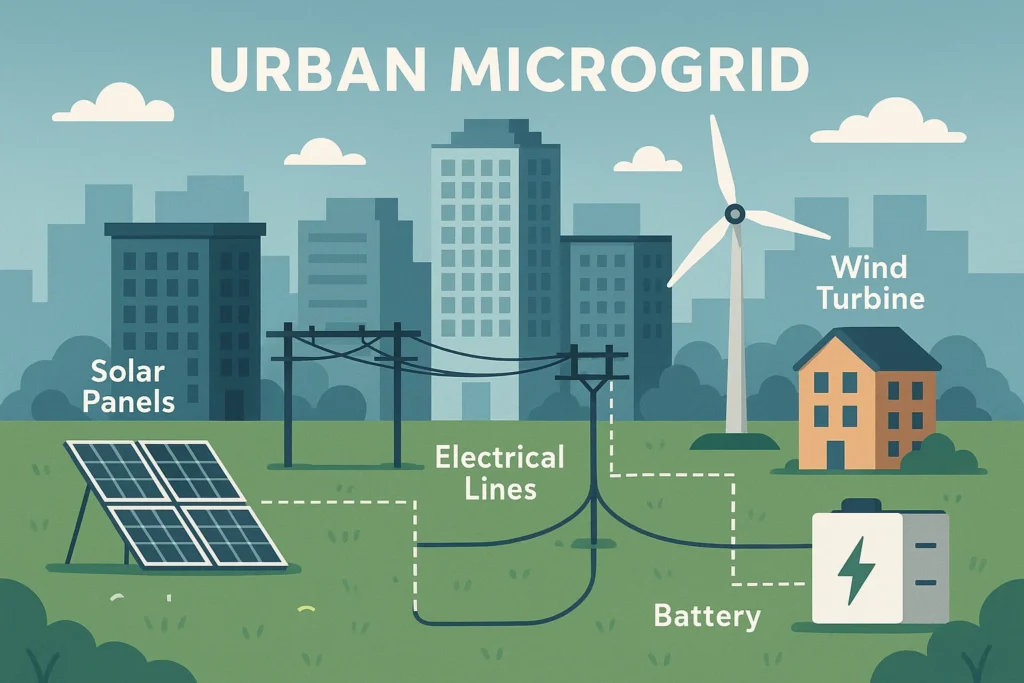
The Road Ahead for City Power
So, what does all this mean for our cities? It’s pretty clear that the old way of doing things, relying on one big power source, just isn’t cutting it anymore. Microgrids are stepping in, offering a smarter, more reliable way to keep the lights on, especially when things go wrong. They’re not just about backup power, though; they’re about using cleaner energy and giving communities more control. As these local power systems become more common, we’ll likely see cities that are not only more resilient to outages but also a bit greener and more self-sufficient. It’s a big shift, but one that feels like it’s already well underway, changing how we think about electricity in our neighborhoods.
Frequently Asked Questions
What exactly is a microgrid in a city?
Think of a microgrid as a mini power system for a specific area in a city, like a neighborhood or a business district. It can create its own electricity, store it, and manage it all by itself, or it can work together with the main city power grid. This makes it super reliable, especially when big power outages happen.
Why are microgrids good for keeping cities running during problems?
When bad weather or other issues knock out the main power, microgrids can keep things like hospitals, police stations, and even your home running. They act like a backup power source that’s already in place, making sure important places don’t lose power when the rest of the city does.
How do microgrids help use more clean energy like solar and wind?
Microgrids are perfect for using clean energy because they can store extra power from solar panels or wind turbines. When the sun isn’t shining or the wind isn’t blowing, the stored energy can be used. This helps cities use more green power and less dirty fuel.
Can microgrids save people money on their electricity bills?
Yes, they often can! Because microgrids create power locally, they can cut down on the costs of sending electricity over long distances. Some microgrids even let people sell extra clean energy they make back to their neighbors, which can lower everyone’s bills and create local energy jobs.
Is it hard and expensive to set up a microgrid?
Setting up a microgrid can be tricky and cost a lot at first. You need special equipment and smart technology to make it work right. Plus, there are rules and laws that sometimes make it harder to get these local power systems approved and built.
Will we see more microgrids in cities in the future?
Definitely! As cities want more reliable power and cleaner energy, microgrids are becoming more popular. New technology is making them better and cheaper to build, and they’ll be a big part of making sure cities have enough power for everything, from electric cars to new buildings.

